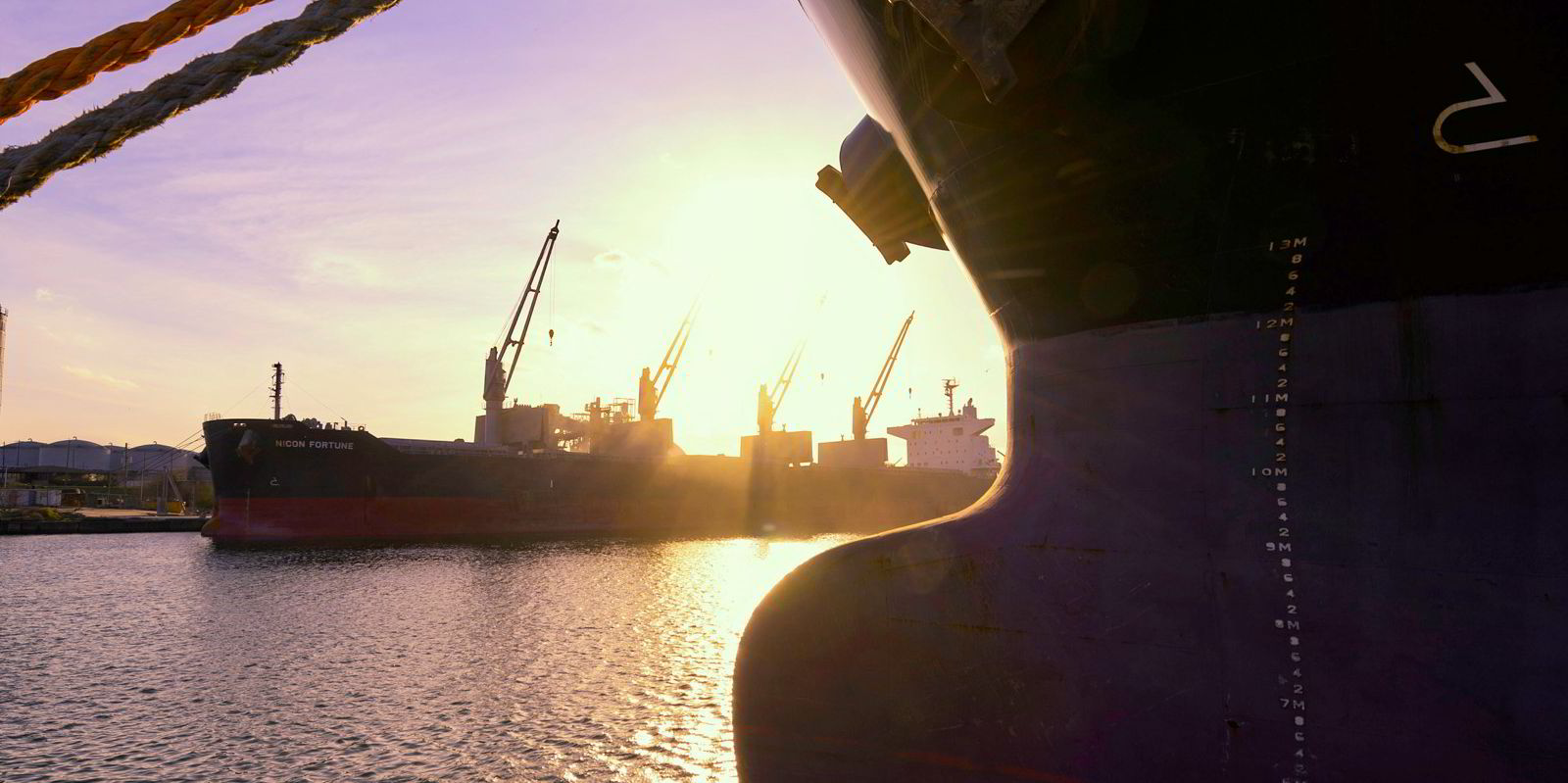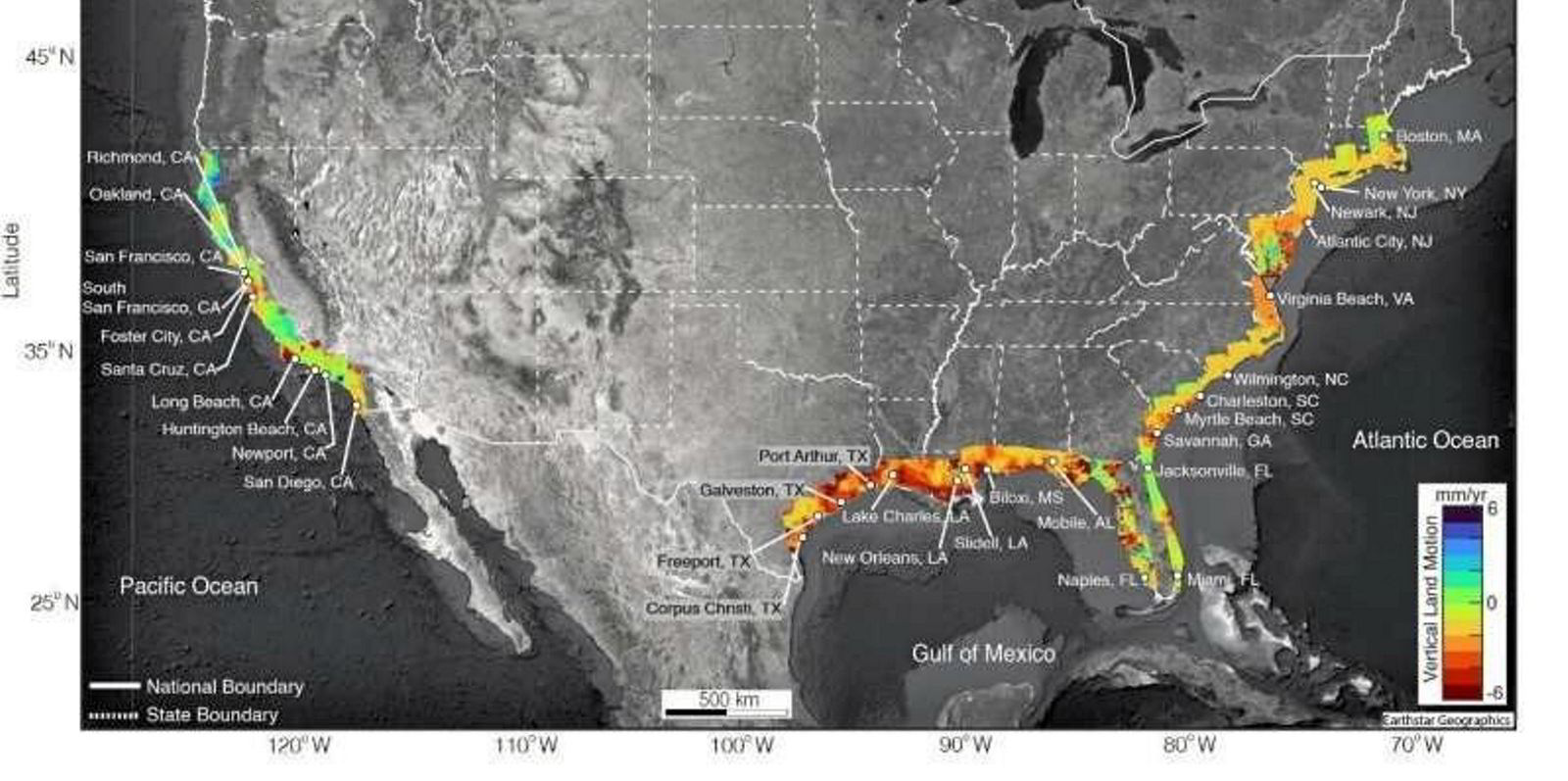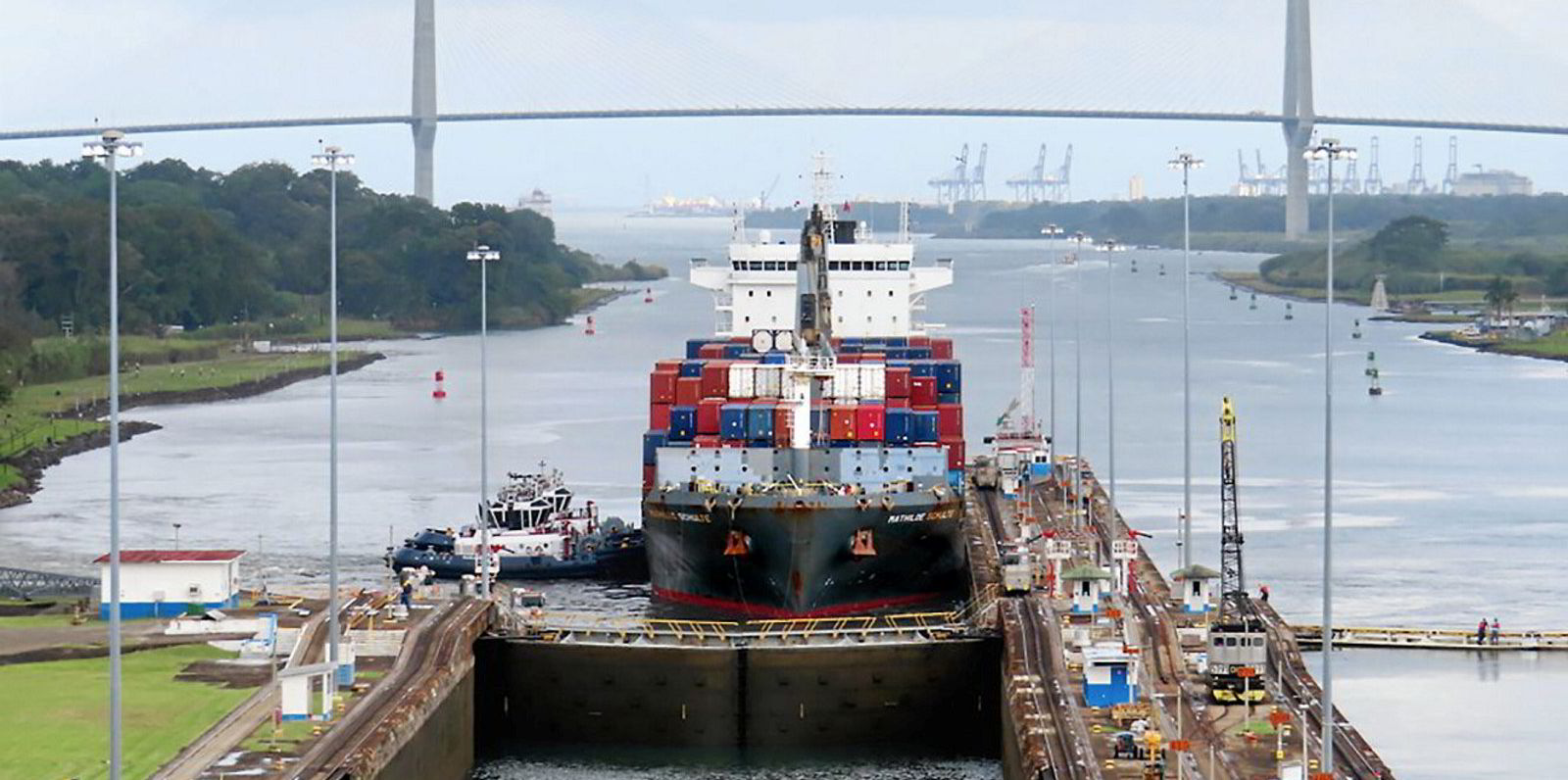Some of the busiest ports in the US face major climate-change-linked disruption, with sea levels along its coast projected to rise faster than the global average, according to new research.
The greatest impacts from a combination of sinking land and rising waters can be seen on the US Gulf coast, home to the country’s top three ports, in terms of total tonnage handled, at Houston and Corpus Christi in Texas, and South Louisiana.
The study, published in the journal Nature, warns that a considerable amount of land in 32 US coastal cities is at risk of flooding by 2050.
While the report focuses on land and populations, the research supports previous studies that highlight threats to ports in the US and the huge cost of preparing shipping infrastructure to adapt to the looming threat of man-made climate change.
The study combines satellite-measured land subsidence with flooding risks in cities along the Atlantic, Pacific and Gulf coasts.
Global sea levels rose about 17 cm (6.7 inches) over the past 100 years. But the pace of change has increased and levels are likely to rise by 25 cm to 30 cm by 2050 along the US coastlines, increasing the prospect of more destructive flooding in big cities.
Sea levels are rising faster along the US coasts than the global average and this trend is expected to accelerate over the next few decades, said the authors from the US, Canada, the UK and India.
“From the three coasts we surveyed … the greatest impact in terms of sinking was on the Gulf Coast,” lead author Leonard Ohenhen from Virginia Tech told TradeWinds.
“The Gulf Coast is sinking at tremendous rates, rates of even up to 1 cm a year in some extreme cases.”
He said the Gulf Coast has cities with important infrastructure that would be affected, such as ports and refineries.
“The extraction of groundwater, oil and gas is one of the major drivers of sinking anywhere in the world and that’s very much the case on the Gulf Coast,” he added.
The study found that the Atlantic Coast faces significant risks, in part owing to an absence of sufficient flood protection.
A study published last year identified Houston as the most at-risk port from climate damage in the world.

Researchers from Oxford University in the UK found that Houston faced risks amounting to $169m a year from a combination of cyclone winds and flooding.
They assessed 1,340 ports around the world and found that damage from natural disasters could amount to $7.5bn a year, with a further $63bn in losses from the resulting upheaval in global trade.
Up to 1.8% of maritime trade is at risk from weather-related disruption every year, they estimated.
Read more
- Vietnamese shipowner says its tanker could not have been source of oil slick off Brazil
- Podcast: How a suspected oil slick off Brazil is just the tip of the iceberg
- Choose the transformative power of green maritime fuels rather than false solutions
- KCC moves into ‘leadership band’ with first A score from Carbon Disclosure Project
- Global crises prompt surge in shipping emissions, says UN





